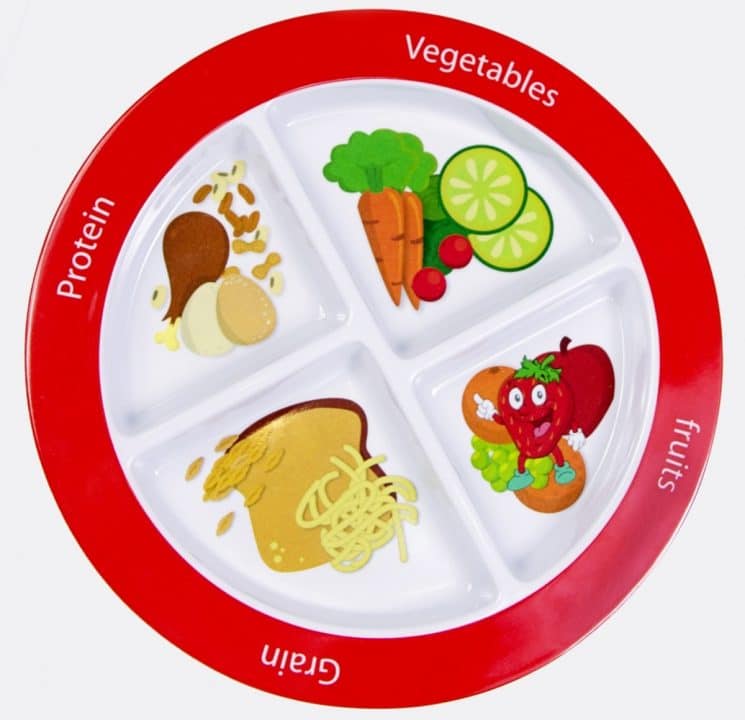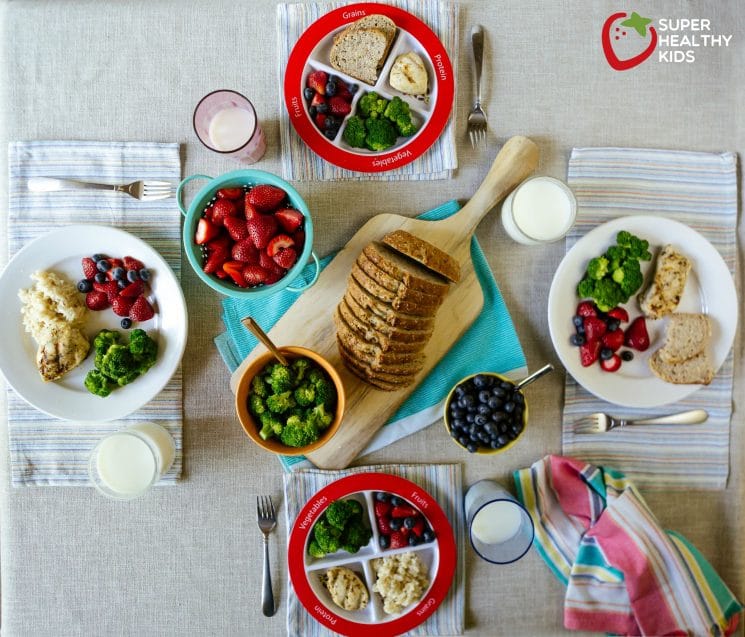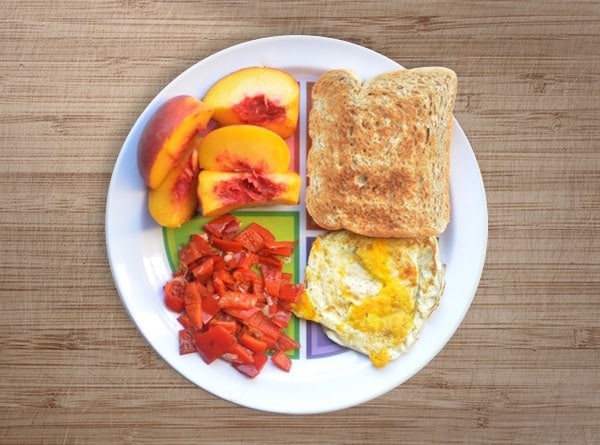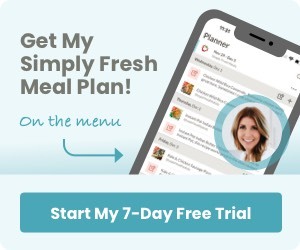Teaching Healthy Habits to Kids with MyPlate
We recently asked this question on Facebook: What is one healthy habit you wish your child had!? I love this question, as it gives such a great picture of what you value and what is important to you in growing healthy children! Some of your answers included:
- Eating a variety of foods
- More willing to taste new foods
- To have a healthy relationship with food
- Drink more water
- Have a positive attitude
- Eat a balanced diet and eat home cooked foods (rather than processed foods)
- Portion control on the “not so good for you” foods.
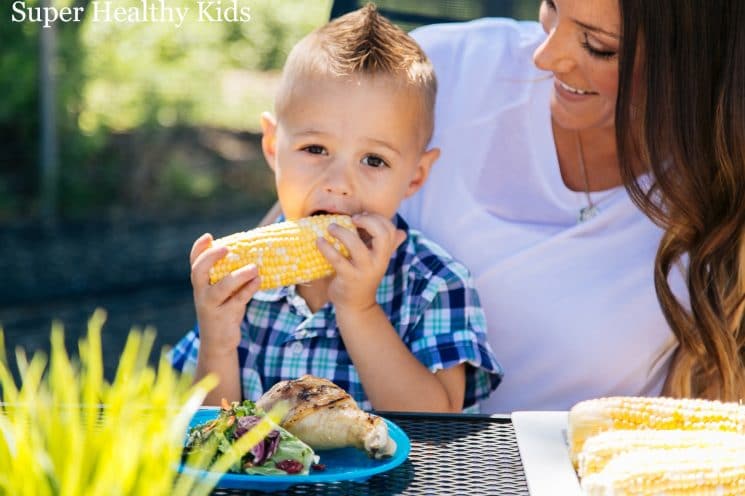
I love these answers!! This is fundamentally the skills and habits we are trying to instill in children at Super Healthy kids! When kids have a healthy relationship with food, enjoy new healthy foods, eat an adequate, balanced and nutritious meal, and associate all that with good feelings, they stick! None of these habits would stick if it all was associated with guilt, shame, pain, lack, or restriction.
To tackle the idea of building healthy habits with the least amount of resistance, and the greatest opportunity for success, it’s important to focus on the things that really matter! Some health habits are going to have a big impact on kids health, while others might be less significant. It doesn’t make much sense to me to focus on only eating organic foods, when the child isn’t eating any fruits and veggies to begin with! The fruits and vegetable consumption (organic or not) is a “big rock”. Something that is going to have big impact on future food preferences. Worrying about whether that food is organic or will not significantly change their desire to eat well. So, what are these big rocks, and how do we teach them to kids? What are these “big rocks” or important health habits that are going to have the biggest impact on a child’s well being? They are: Choosing fruits and veggies, eating moderate portions sizes, and eating balanced meals.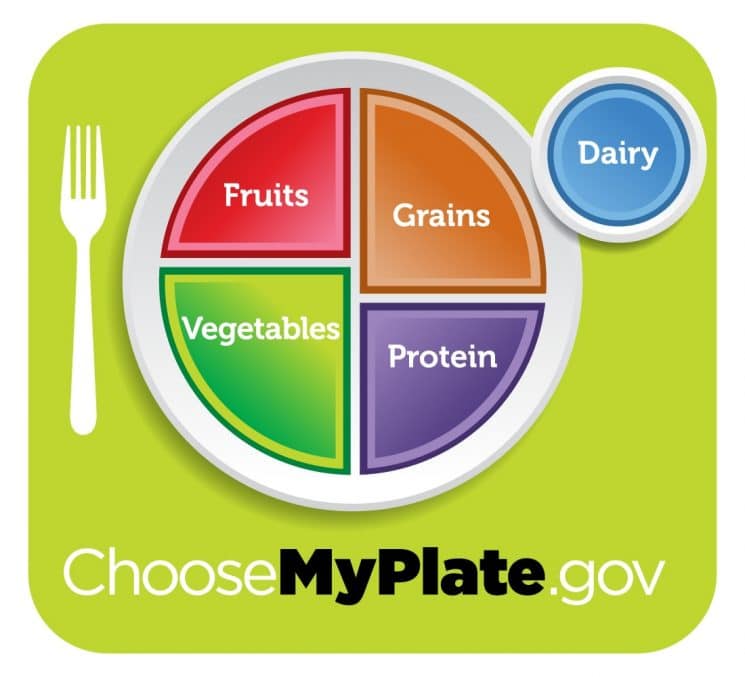
Habit #1 Choose Fruits and Veggies
My greatest desire is that my kids would choose an apple over potato chips! Is that realistic? Probably not, and they even LOVE apples! BUT, we can teach them that an apple is better for them, makes them feel great, and hopefully, as they get more mature, they WILL make that choice on their own.
There are 3 practices here for helping kids develop the habit of choosing fruits and veggies:
- HALF YOUR PLATE : As we use the model for healthy eating, MyPlate, kids notice right away that HALF their meal should consist of fruits and veggies! The bottom line is MORE FRUITS AND VEGETABLES! Kids using this plate model will actually ASK for more fruits or vegetables, just so every section is filled! We hear it over and over from parents who use our plates. Kids see the visual, understand the message, and ask for more!
- KNOW THE POSSIBILITIES: As kids learn the way they like their fruits and veggies (cooked, dried, raw, frozen, blended, with salt, with cheese, etc.) they are more likely to choose them! For some, a blended smoothie would taste just as good as a milkshake! When they know that, they can choose that, because suddenly it becomes an option.
- PEER PRESSURE! For real- Peer pressure is usually associated with peers trying to get your kids to do bad things, but we’ve had GREAT success with our kids eating more fruits and veggies when their friends, cousins, a favorite grandpa, or even us, their parents, eat more fruits and veggies! Model this behavior (consistently) and you’ll see results! And when all else fails, get a neighborhood kid you know likes a certain food to come eat it with your family! We had a neighbor once tell my son that his favorite food was spinach! My son came home and asked for some spinach. Seriously, kids are funny that way!
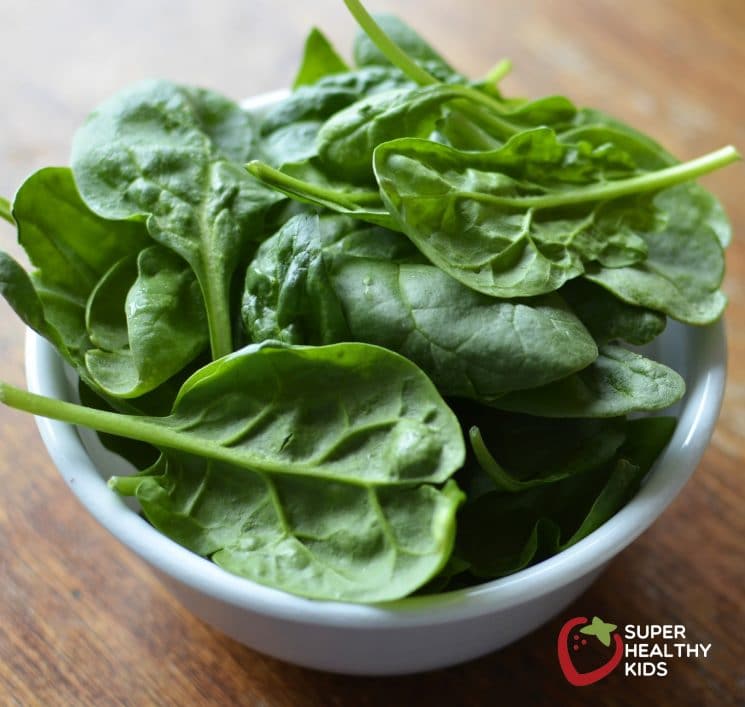
Habit #2 Eat Moderate Portions
Somewhere along the line of growing up, we stop listening to our bodies hunger signals. Before long, we begin eating when we aren’t hungry, eating when we are bored, stressed, tired, moody, happy, or celebrating! Soon, eating beyond the feeling of comfort might become normal! When we eat for all these reasons, it’s easy to overeat, because we were never hungry in the first place! Sometimes, giving ourselves boundaries is the best way to return to mindful eating again. A few lessons we can teach our kids to instill this habit, eating moderate portions (otherwise known as not – OVER eating!) The three practices for eating moderate amounts of foods include:
- SIT DOWN TO EAT– Eating the right portions that our body needs, requires us to be tuned into our thoughts! Being distracted is the mother of mindless overeating. The easiest way to combat this is to have designated eating areas, like the kitchen table! Not only does this start a very important habit, but it also keeps the other areas of your house clean! Using dishes like MyPlate helps kids to have structure around their meals as opposed to sticking their hands in a box of cereal.
- IDENTIFY WHY YOU ARE EATING It’s ok to eat for celebrations, traditions, and more, but being AWARE of the fact we are eating for a reason other than hunger is important to acknowledge and even say out loud! Helping kids become aware of their thoughts and motives for doing things is a huge step in learning to be accountable for our behaviors.
- PRACTICE MODERATION! One of the biggest parenting mistakes I’ve made is allowing my own inability to control my behavior, create poor choices in my children. When an event like Halloween, or even cookie making would happen, I found myself saying: “Better eat it all today! It won’t be here tomorrow.” What was I thinking?? I was telling my kids to eat more than they wanted to because the item was in danger of disappearing. I created false scarcity because of my own inability to practice moderation. I’m happy to report, we are MUCH better at it! Now, Halloween comes around, and I challenge the kids to eat ONE piece per day! They actually do it, and are happy to do it. I love that it helps them practice indulging, with the ability to be in control.
Habit #3 Eating balanced meals
A balanced meal is one that incorporates a small portion of every food group! Eating balanced meals is an important habit to learn because we are than able to obtain all the nutrients from food that help us grow and thrive. The three practices that will help your kids master balanced meals is:
- KNOW THE FOOD GROUPS! Learning what types of foods are in each food group and what they do for their bodies is the basic first step in understanding how to balance. The way I teach it is I ask for examples of “protien”, and then tell them that protein helps our muscles grow! Then, I ask for examples of grains, and I tell them “Grains help us run fast”. Then, I ask for examples of vegetables, and I tell them, “Veggies help us not to get sick!? Lastly, I ask for examples of fruits, and tell them, “The fiber in fruit helps us to digest all our food!” When they know they should be eating from EVERY food group, they want to! Their growing bodies need something each one has to offer.
- THE SECOND HELPING RULE As my kids got bigger, and their appetite followed, they wanted seconds and thirds of their meals! GREAT! They were always allowed to. I never limited food during a meal. HOWEVER, there was one rule…. they had to have seconds from every food group to keep the meal proportional to MyPlate! If I didn’t have that rule, they would have seconds, thirds, fourths, and fifths of the dinner roll! Rather, if they wanted another dinner roll, they also had to eat another portion of veggies, fruits, and proteins.
- USE SNACKS TO FILL THE GAPS The last practice that helps kids learn balance is the practice I call: Snacks to fill the gaps! When the kids are hungry between meals, instead of reaching for crackers, we do a quick inventory! The question to them is: have you had any veggies today? If no- the snack is a vegetable! Or have you had any protein today? If no- The answer could be to eat a hard boiled egg! Snacks aren’t just meant to tide the kids over till the next meal, snacks are meant to meet nutritional requirements to complete your day! This simple question helps them get there.
So, there you have it!! The THREE MOST IMPORTANT HABITS to teach your kids, as well as some practices that will help you achieve both!
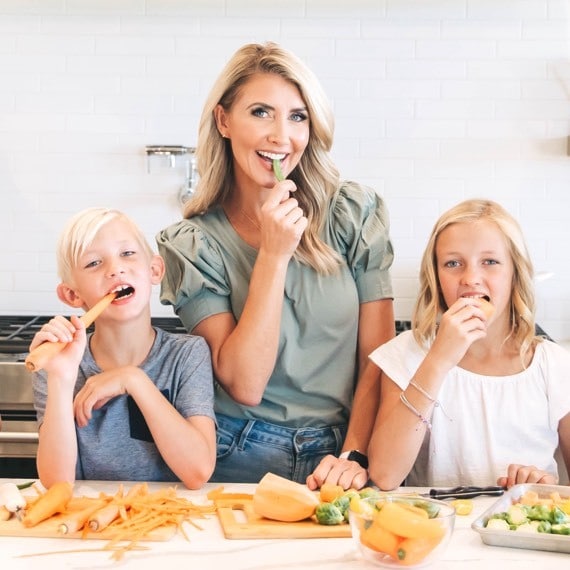
Natalie Monson
I'm a registered dietitian, mom of 4, avid lover of food and strong promoter of healthy habits. Here you will find lots of delicious recipes full of fruits and veggies, tips for getting your kids to eat better and become intuitive eaters and lots of resources for feeding your family.
Learn More about Natalie